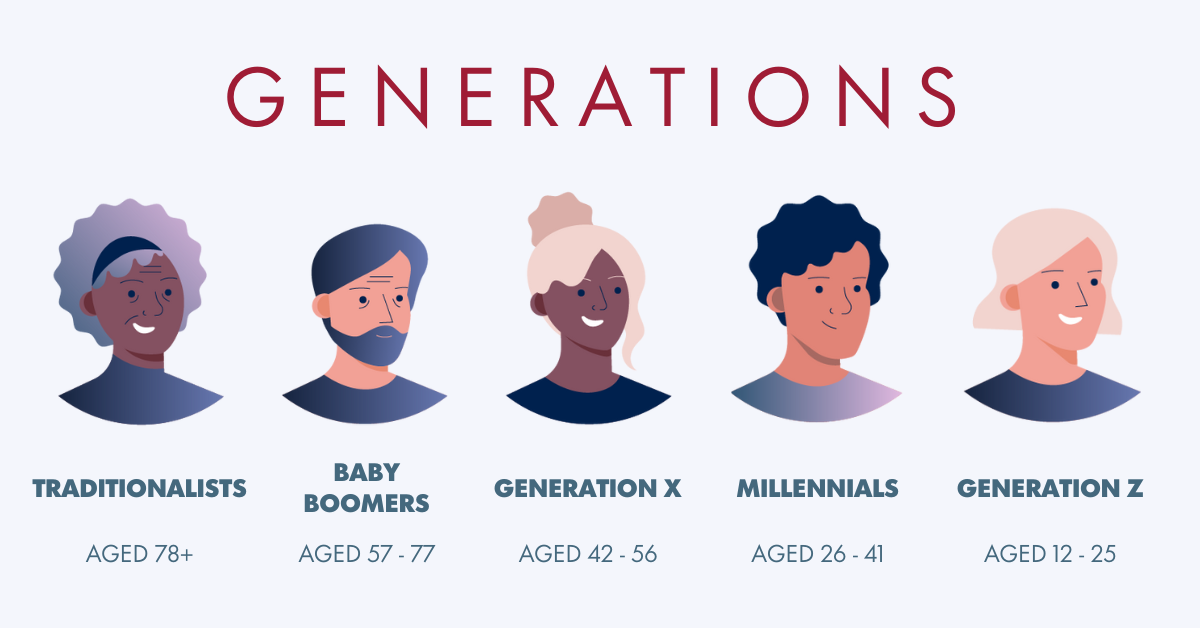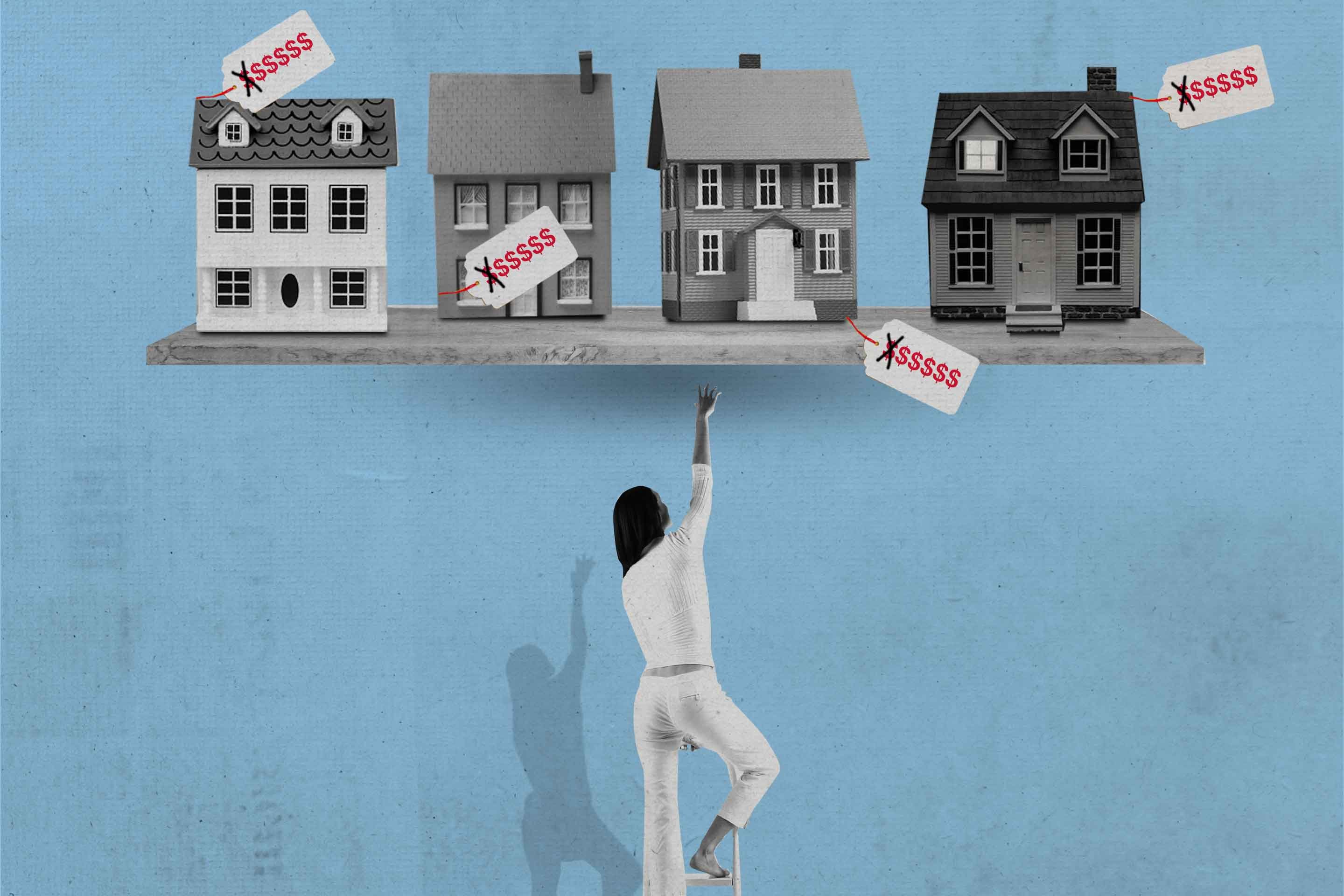The real estate landscape is an ever-evolving terrain, influenced by a multitude of factors.
One such influential force that often flies under the radar is demographics.
Yes, demographics – the study of populations, their characteristics, and trends – wield a remarkable impact on housing demand, molding both the present and the future.
In this intriguing journey, we will explore how demographic shifts shape the housing market and discuss the ripple effect on real estate agents.
The Dance of Generations

(Photo from Robert Half)
Picture this: Baby Boomers, Generation X, Millennials, and Gen Z. These are not just terms; they're the rhythm sections in the symphony of demographics. Each generation dances to its unique tune, impacting housing trends in its own way.
Baby Boomers: The trailblazing generation that experienced post-war prosperity, Baby Boomers have now reached retirement age. With empty nests and a desire to downsize, they're triggering a surge in demand for smaller, more manageable homes. Retirement communities and age-specific housing options are rising in popularity, reshaping the real estate landscape.
Generation X: Wedged between two larger generations, Gen Xers are a bridge between old and new. Many are established homeowners, seeking to upgrade or invest in vacation properties. This generation's choices heavily influence the luxury market, driving demand for amenities that cater to their family-oriented and work-centric lifestyles.
Millennials: Ah, the buzzworthy Millennials! As they embark on the journey of adulthood, their preferences are steering the housing market in exciting directions. An affinity for urban living, sustainability, and flexibility has sparked interest in condos, townhomes, and rental units. The rise of remote work has also opened up the suburban landscape, as Millennials search for larger spaces to accommodate both living and home offices.
Gen Z: The up-and-coming cohort, Gen Z, is just beginning to influence the real estate conversation. While they're still in their early stages of independent living, their inclination towards technology, connectivity, and communal spaces is likely to reshape urban planning and the design of future housing developments.
The Urban vs. Suburban Tango

(Photo from Boulder Home Source)
A major influence on the urban vs. suburban debate is demographics. Even though the bustle of city life has always been a draw, recent trends show a shift in favor of suburban living. This transformation has been fueled by the pandemic as the lines between work and home are increasingly blurred by remote work. Families are therefore drawn to larger suburban homes in search of solitude and space without sacrificing connectivity.
Mind the Gap: Housing Affordability

(Photo from Money)
There are some drawbacks to the demographic-housing demand relationship. Housing affordability is a huge problem, especially for younger generations. Millennials are fighting an uphill battle in their quest to become homeowners because of their heavy student debt loads and increasing housing costs. This conundrum is urging policymakers and developers to explore innovative solutions, from co-housing models to more accessible housing financing options.
Impact on Real Estate Agents

(Photo from WebMorcha)
Now, let's step into the shoes of the unsung heroes of the real estate realm: the agents. Demographic shifts are like winds that guide these navigators, dictating the course of their business.
Real estate agents are required to be the chameleons of the industry, adapting to the changing preferences of each generation. They must be well-versed in the desires of Baby Boomers seeking peaceful havens, equipped to understand Gen Xers' fascination with modern amenities, and attuned to Millennials' penchant for sustainable living. Their role goes beyond selling properties; it's about crafting a narrative that resonates with the potential buyers' values and aspirations.
Agents discover themselves at the center of the tug-of-war between the urban and suburban areas. They must be equipped with knowledge that enables them to match clients with the ideal neighborhoods, whether that be an emerging urban enclave or a cozy suburban cul-de-sac, as they navigate this dynamic landscape.
Concerns about housing affordability add yet another layer to the agent's difficulties. Agents frequently take on the role of problem-solvers for younger clients who are finding it difficult to enter the housing market by guiding them through financing options, government assistance programs, and alternative living arrangements.
To conclude, in the captivating world of real estate, demographics are a silent yet powerful force that shapes the course of housing demand. The dance of generations, the urban-suburban tango, and the affordability conundrum all play their part in this intricate narrative. And let's not forget the invaluable role of real estate agents, who act as interpreters, guides, and advocates in this ever-evolving landscape. As we embrace the present and gaze into the future, one thing is certain: demographics will continue to be a driving force, ensuring that the housing market remains as vibrant and diverse as the people it serves.
As always, we here from Transactly would like to thank you guys so, so much for taking the time to read this blog post - your continuous support is always appreciated! For all the latest real estate content, latest news, and more to fuel your daily digest, stay tuned: we'll be getting new blog posts up every Monday, Wednesday, Friday, and Saturday.
We'd like to give credit where credit is due and list down the following websites that provided the inspiration behind this blog post - go give their articles a read!
ARA Capital: https://www.aracapital.com/insight-detail/in-conversation-demographics-shaping-real-estate
LinkedIn Pulse: https://www.linkedin.com/pulse/how-demographic-trends-families-shaping-future-real-estate
HAR Blog: https://www.har.com/blog_115027_demographic-trends-shaping-the-real-estate-market